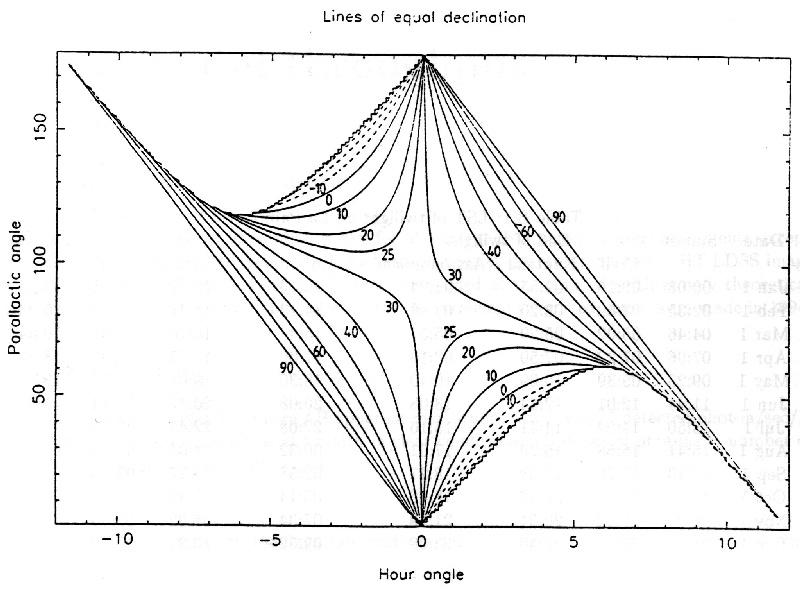
ALFOSC: Setting the proper rotator angle to minimise slit losses due to differential atmospheric refraction When doing long-slit spectroscopy of point sources, determining
the the proper rotator angle which aligns the slit along the
atmospheric dispersion direction is trivial with an Alt-Az telescope.
Simply put, the slit should always be oriented perpendicularly to the
horizon, which also happens to be perpendicular to the altitude axis
of the telescope.
For ALFOSC slits that image along the rows of CCD#8 (horizontally),
this can be achieved in normal operation of the
telescope, with the rotator in automatic mode by issuing the TCS
command As of autumn 2006, we have a new telescope presetting command,
which will put the rotator tracking at a predefined (parallactic)
angle. To define this angle use
Why do this?The atmosphere is a dispersive medium, and the greater the zenith angle, the greater the effect will be. Thus, at high airmasses, a stellar image will be spread out into a small spectrum and this spread can be significant compared to the seeing disk size. Under these conditions, if the slit is not aligned along the dispersion direction, light of some wavelength ranges will be lost through obstruction by the slit jaws while other wavelengths will pass into the instrument unhindered. Typically, this will manifest itself as a varying continuum in the observed source, with one end of the spectrum steadily losing signal as the object descends towards the horizon. The specific wavelengths lost will primarily depend on the relative colours of the object used for guiding and the target object -- for example, a relatively red guide star will cause the telescope to follow the red part of the target object and blue light will be lost. The obvious solution to this is to orient the slit with the parallactic angle. That is, the slit is oriented so that it is always perpendicular to the horizon, since this is the direction in which starlight is dispersed. The above procedure will acheive this and minimise losses due to differential atmospheric refraction.
 Taken from the 1994 ING Observers' guide: parallactic angle as a function of telescope position.
|
||
|